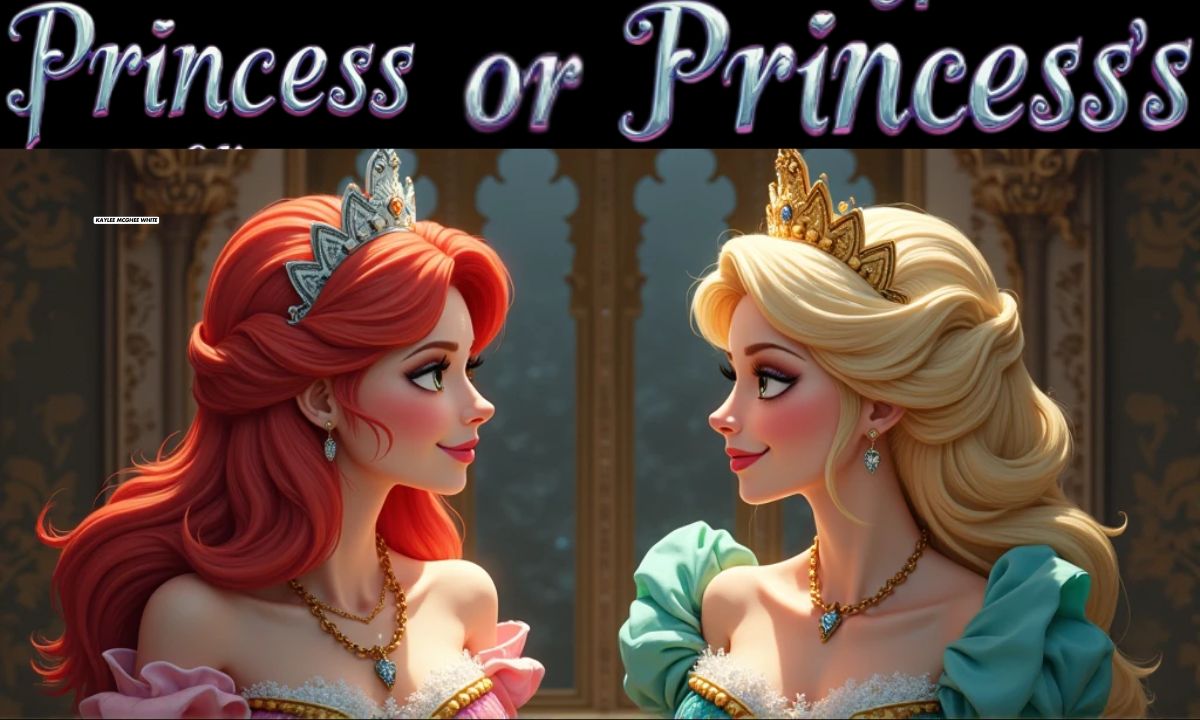Grammar rules can sometimes feel like a royal mystery, especially when it comes to possessive forms. For words like “princess,” the distinction between “princess’” and “princess’s” often leaves writers puzzled. Is there a definitive rule? Does it depend on the context? And how can you ensure you’re using proper possessive usage every time?
This guide explores these questions in detail, offering clarity and practical tips for understanding singular possessive, plural possessive, and the nuances of American English style.
What Are Singular and Plural Forms?
Before diving into possessive forms, it’s essential to understand the foundation: singular and plural forms. These forms establish how many “princesses” you’re referring to and determine how you’ll construct their possessive forms.
Singular Form
The singular form refers to one “princess,” a royal female figure who embodies nobility and grace. In grammar, singular nouns are straightforward: they signify a single entity.
- Example Sentences:
- The princess attends the royal ball.
- A noble princess must follow the rules of etiquette.
These sentences focus on a single individual. Singular nouns are the building blocks for creating singular possessive forms, as we’ll discuss later.
Plural Form
When referring to multiple princesses, you use the plural noun. For nouns like “princess,” forming the plural requires adding “es” due to the word’s ending.
- Example Sentences:
- The princesses gathered in the grand hall.
- These princesses represent different kingdoms.
In this case, the plural noun clearly indicates more than one royal female figure. Understanding this distinction is critical when transitioning to plural possessive forms.
Understanding Possessive Forms
Possessive forms denote ownership or association, which is a cornerstone of English grammar. Whether you’re talking about a princess’s crown or the princesses’ gowns, the apostrophe placement determines meaning.
Singular Possessive Form
The singular possessive form is used when a single princess owns something. To create it, add an apostrophe followed by an “s” to the singular noun.
- Rule: Singular noun + ’s = Singular Possessive
- Example: The princess’s crown sparkled in the sunlight.
This construction is common in American English style, where clarity often trumps brevity. It emphasizes ownership, making it clear that one specific princess possesses the item.
Tip: Always pronounce the additional “s” in speech to reinforce proper possessive usage.
Plural Possessive Form
When multiple princesses share ownership, the plural possessive form applies. Here, you place the apostrophe after the “s” in the plural noun.
- Rule: Plural noun + ’ = Plural Possessive
- Example: The princesses’ tiaras were adorned with diamonds.
This form prevents confusion, ensuring readers understand that multiple royal female figures are involved. Proper apostrophe placement is a hallmark of good grammar.
Common Confusion: Princess’ or Princess’s?
The debate between “princess’” and “princess’s” often arises due to conflicting style guide preferences. In American English style, adding ’s (princess’s) is the preferred way to indicate singular possessive forms, even if the word ends in “s.” However, some traditional approaches, especially in older British English or minimalistic styles, drop the extra “s” for simplicity.
For example, “The princess’s crown” is widely accepted in modern usage, while “The princess’ crown” is seen as an alternative in less formal or stylistic contexts. Choosing one and applying it consistently is crucial for clarity.
The Rule
The debate over “princess’” versus “princess’s” stems from style guide preferences. While American English style generally favors “princess’s” for singular possessives, some exceptions exist in older traditions or stylistic choices.
- Example 1 (Modern Usage): The princess’s speech captivated the audience.
- Example 2 (Alternative Style): The princess’ speech captivated the audience.
Both are technically correct, but the first option is more widely accepted in American writing. Consistency is key: choose a style and stick with it.
Examples of Possessive Forms in Context
Possessive forms shine in real-world scenarios. Imagine a story where a single princess owns a crown: “The princess’s crown glittered in the moonlight.” This demonstrates singular possession. On the other hand, consider multiple princesses attending an event:
“The princesses’ gowns were carefully arranged for the ceremony.” The plural possessive form highlights shared ownership. These examples show how apostrophe placement can alter meaning and maintain grammatical accuracy.
Singular Possessive in a Scenario
Consider a story where a single princess owns a luxurious crown:
- Sentence: The princess’s crown, encrusted with emeralds, was a symbol of her power.
Here, “princess’s crown” emphasizes singular ownership, aligning with grammar rules.
Plural Possessive in a Scenario
Imagine multiple princesses attending a gala:
- Sentence: The princesses’ gowns shimmered under the ballroom lights.
This sentence highlights the plural possessive form, indicating shared ownership by multiple individuals.
Quick Reference: Singular vs. Plural Possessive
| Form | Example | Explanation |
| Singular Possessive | The princess’s crown | Ownership by one princess |
| Plural Possessive | The princesses’ dresses | Ownership by multiple princesses |
Summary of Possessive Forms
Understanding possessive forms revolves around mastering grammar rules and applying them consistently:
- Singular possessive: Use ’s for single ownership.
- Plural possessive: Add an apostrophe after the “s” for plural nouns.
By keeping these simple rules in mind, you’ll avoid common errors and ensure your writing stays polished.
More Examples of Correct Usage
Possessive forms are essential in professional writing. For singular possessives, you might write, “The princess’s request for additional security was granted.” For plural possessives, you could say, “The princesses’ private chambers were adorned with flowers.”
These examples not only clarify ownership but also ensure your writing appears polished and professional. Proper grammar helps avoid misinterpretation, especially in formal communication.
Email Scenario: Singular Possessive
- Subject: “The princess’s schedule for the upcoming event.”
This demonstrates clarity in formal communication, reflecting professionalism.
Email Scenario: Plural Possessive
- Subject: “The princesses’ arrival details.”
Here, the plural possessive avoids ambiguity in official correspondence.
Why Correct Grammar Matters
Grammar is the foundation of clear communication. Misplaced apostrophes or incorrect possessive forms can confuse your audience and diminish your credibility. For instance, writing “princess’s crown” instead of “princess’ crown” might seem minor, but consistency signals professionalism.
Beyond clarity, proper grammar also reflects attention to detail and respect for your readers, especially in formal or academic contexts. As a tool for effective expression, good grammar bridges the gap between intention and understanding.
English Grammar and Its Impact
Good grammar isn’t just about rules; it’s about effective communication. Misplaced apostrophes can confuse readers and undermine credibility. In professional settings, precise grammar enhances clarity and conveys attention to detail.
As the saying goes: “Grammar is the difference between knowing your stuff and knowing you’re stuffed.”
Conclusion: Mastering Possessive Forms
Mastering the nuances of “princess’” and “princess’s” is simpler than it seems. By understanding the difference between singular possessive and plural possessive, you’ll elevate your writing.
Whether you’re discussing a princess’s crown or the princesses’ adventures, proper possessive usage ensures your message shines.
Start practicing today—you’re one step closer to grammatical royalty!

